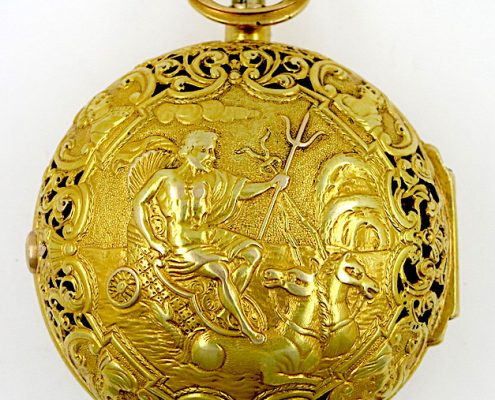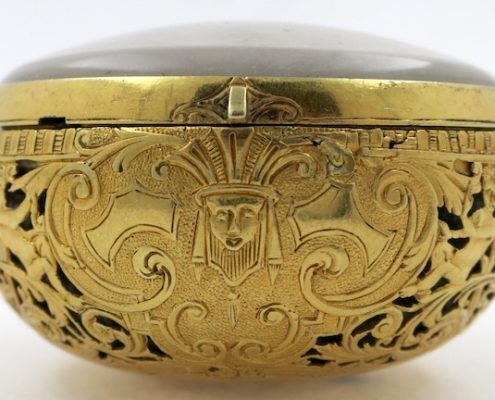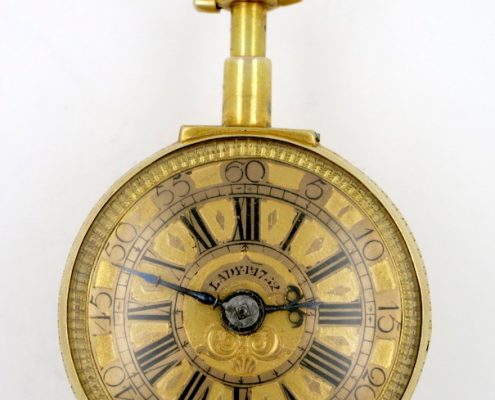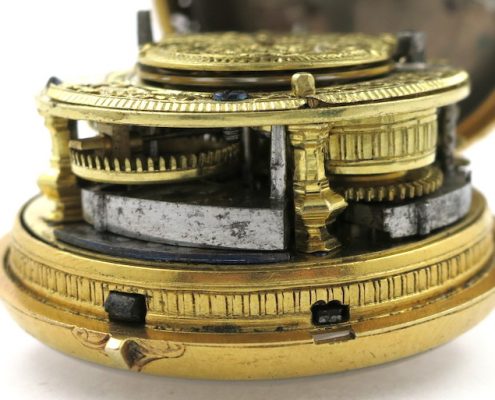Gold repousse cased half quarter repeater, London, 1732
Stock No. 1504
Charles Cabrier
London, 1732
Gold repousse pair cases, 48 mm
Verge, half quarter repeating movement
Sold
An early and excellent quality gold verge repeater, with very unusual personalised and dated gold champleve dial.
MOVEMENT : Gilded movement with unusual baluster pillars, small silver regulator disk, and beautifully pierced and engraved winged balance cock. The movement is signed (CABRIER, LONDON).
The mainspring set up is by a steel square accessed through the neck of the balance cock, and a steel click locking the cog under the drum. This is a very unusual arrangement but appears to be original to the movement as there are no unused holes for a standard worm screw set up.
All in good condition. Running well and repeating correctly.
The half quarter repeat strikes the bell once for each hour, twice for each quarter, and then once for each half quarter (seven and a half minutes).
DIAL : Gold champleve dial, personalised with “LADY P. 1732” in the centre where the maker’s name would usually be. In good condition.
Nice 18th century, blued steel, beetle and poker hands.
INNER CASE : Gold case, with no maker’s mark or hallmark.
Good condition, though some wear to the rim at the catch. The high dome crystal is fine and the bezel snaps shut correctly.
The small lever on the bezel at 7 is a ‘pulse piece’ allowing the repeat to be silent but vibrating, by pressing the button during the repeat. This lever is intact but the end has broken off.
The bell has been repaired but still strikes with a clear chime.
OUTER CASE : Unmarked gold again, with beautiful repousse work showing Poseidon on his chariot drawn by two horses.
The catch, catch button and hinge are fine and the bezel snaps shut nicely.
The repousse work is in good condition, with very little wear to the high points, but there are two small areas of damage (and a possible old repair ?) to the pierced bezel, near the hinge (see photos).
There were several generations of Cabrier working in London through the 18th century. I believe this watch is by Charles II who worked from 1719.


























